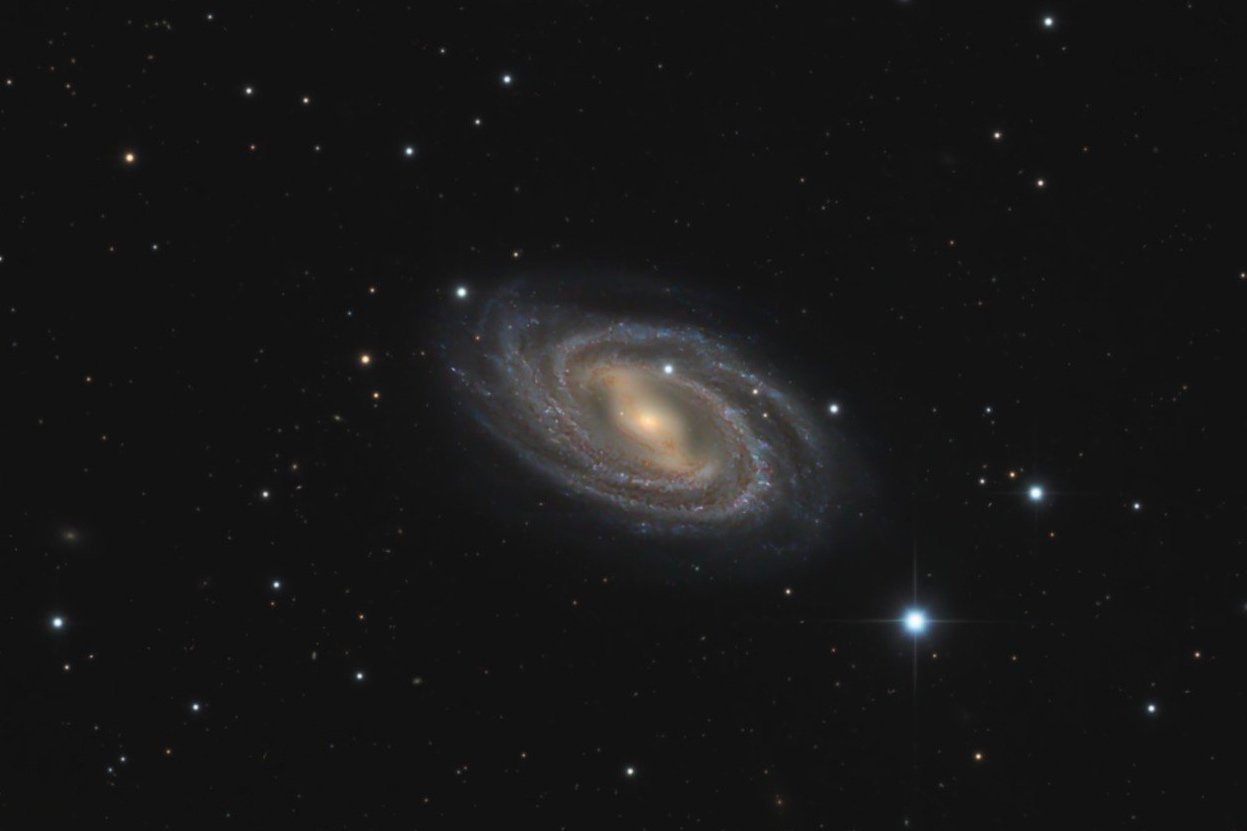
Images
M11
Messier 11, also known as the Wild Duck Cluster, is one of the richest and most compact open star clusters known, located in the constellation Scutum. The cluster is approximately 6,200 light-years away from Earth and has an estimated age of around 220 million years. It contains thousands of stars, many of which are brighter and younger than our Sun.
M17 | Sh2-45
Messier 17, commonly referred to as the Omega Nebula or Swan Nebula, is an emission nebula in the constellation Sagittarius. Spanning approximately 30 light-years in the longest direction, Messier 17 is located roughly 5,000 to 6,000 light-years from Earth. It is one of the most massive molecular clouds in our Galaxy.
Caldwell 21
Caldwell 21 is an irregular galaxy located approximately 12.5 million light-years away in the constellation Canes Venatici. It is part of the M94 Group, a collection of galaxies in the vicinity of the Milky Way. Caldwell 21 is notable for its active star formation, which is evident from the numerous young, blue star clusters and pinkish star-forming regions scattered throughout the galaxy.
M51 | Arp 85
Messier 51, also known as the Whirlpool Galaxy, is one of the most striking and well-known galaxies in the night sky. What makes it special is the interaction with nearby galaxy NGC 5195, distorting its otherwise symmetric spiral pattern. This gravitational pull has triggered waves of star formation in the Whirlpool's arms, lighting them up with clusters of hot, young, blue stars. Here in a long >60h exposure.
M58
Messier 58 is one of the brightest galaxies in the constellation Virgo. Located roughly 62 million light-years from Earth, M58 is the most distant Messier object. The core contains high rates of star formation, known as starburst activity. It also houses a supermassive black hole around 70 million times the mass of our Sun.
Arp 25, Arp 114
Arp 25 and Arp 114 are a spiral and an elliptical galaxy respectively in the constellation Cepheus, at a distance of about 120 million lightyears away from Earth. Their gravitational interaction causes distortions in their morphology.
Caldwell 39
Caldwell 39 (NGC2392) is a bipolar double-shell planetary nebula (PN) in the constellation Gemini. The Sun-like central red star is surrounded by gas that it has emitted from its outer layers. The visible inner filaments are ejected by a strong wind of particles from the central star.
M67
Messier 67 is an open star cluster located in the constellation Cancer. It is one of the oldest known open clusters, with an estimated age of around 4 billion years, making it significantly older than most other open clusters in the Milky Way. M67 is situated approximately 2,700 light-years from Earth and contains over 500 stars, many of which are similar in age and composition to the Sun.
Sh2-230
Sh2-230 is an H II region in the constellation Auriga, approximately 6,800-9,800 light-years from Earth. The nebula spans 16–26 light-years in diameter. The large region known as Sh2-230, but within this region, there are many more, often better known objects, such as M36, M38, Sh2-229, Sh2-234 and Sh2-236 ad Sh2-237.
M109
Messier 109 is a barred spiral galaxy located in the constellation Ursa Major, approximately 83.5 million light-years from Earth. It is one of the brightest galaxies in the Ursa Major Cluster. M109 is notable for its prominent central bar structure. The galaxy has a magnitude of about 9.8. It spans roughly 180,000 light-years in diameter, making it slightly larger than the Milky Way.




















